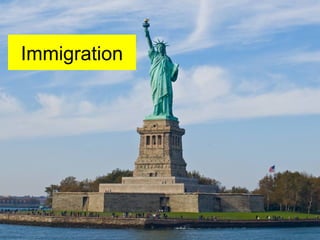This document provides information on immigration to the United States from various parts of Europe and Latin America. It discusses the major waves of immigration from Germany, Ireland, Italy and Mexico. For each group, it summarizes the time periods of immigration, reasons for emigrating (push and pull factors), areas of settlement in the US, and their cultural contributions and influences on American society.
























































































